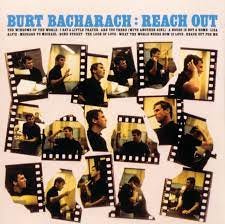To pay tribute to the legendary songwriter Burt Bacharach, who died the other day at 94, the music world celebrated the string of suave and endlessly seductive hits he wrote with Hal David — pop classics like “I Say a Little Prayer” and “Close To You,” indelibly recorded by Dionne Warwick, the Carpenters and many others.
The records Bacharach made and released under his own name in the 1960s received only cursory mention in the tributes — another instance of glib celebrity-media “essentializing” that reduces a long varied career down to a digest of top-selling highlights. It’s easy to understand why: Those lavishly arranged Bacharach projects are typically (and correctly) filed under Easy Listening.
Easy to digest. Easy to underestimate.
But the songs themselves are not exactly easy. They are revered by musicians for their sweepingly lyrical melodies (the kind that sound like they’ve been around for centuries), and for their crisp, slyly unorthodox architecture. Most pop songs are built in four or eight measure units that repeat at regular intervals. Bacharach songs use that convention when it’s convenient, but not always: The first section of “The Look of Love” lasts 18 measures before it repeats — and then comes a hiccup in the form of a shortened measure, lasting just two beats, that brings in the hooky staccato of the refrain.
It’s possible to savor the transcendent Dusty Springfield rendition without noticing any of these granular devices, of course. But I’d argue that encountering the song as an instrumental — recorded by Bacharach on his 1967 LP Reach Out — can focus the ears on the structural sophistication, those strange swerves around tight corners that land, unexpectedly, on feather pillows of quintessential pop tenderness.
The tiny flyspecks Bacharach embedded into the songs are part of what make them so sticky. So timeless yet of a particular time, curiously intimate and grand. These are songs that reward repeat scrutiny, and multiple interpretations, and the easy listening versions reveal exactly why. And, they bring us face to face with aspects of songcraft that are no longer in common circulation. Consider, for a moment, the songs recognized at the recent Grammy Awards. There are gems, to be sure. But they mostly follow predictable routes. They’re almost quirk-free. We need to bear witness to the Bacharach details, and celebrate them. So they don’t disappear entirely.









Oh man! Thanks for this Jim and also for adding the artist. I have that Rhino comp somewhere....totally gives the range of BB's gifts.
A lovely tribute to a truly great musical giant. Thank you.